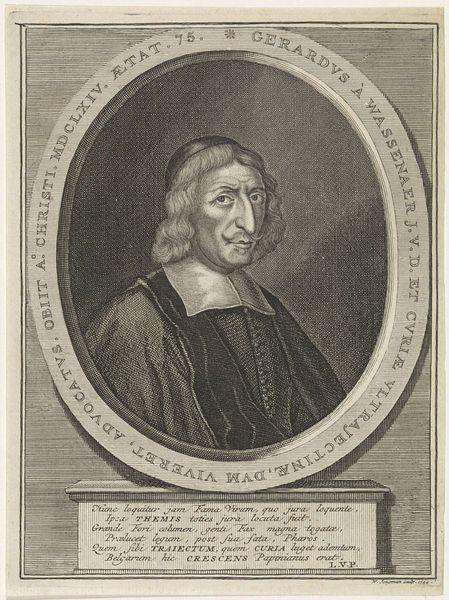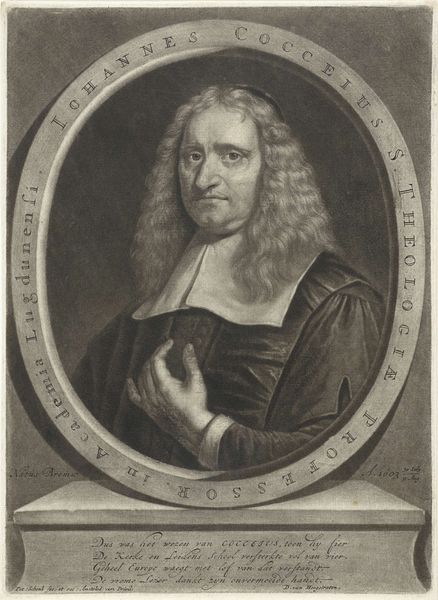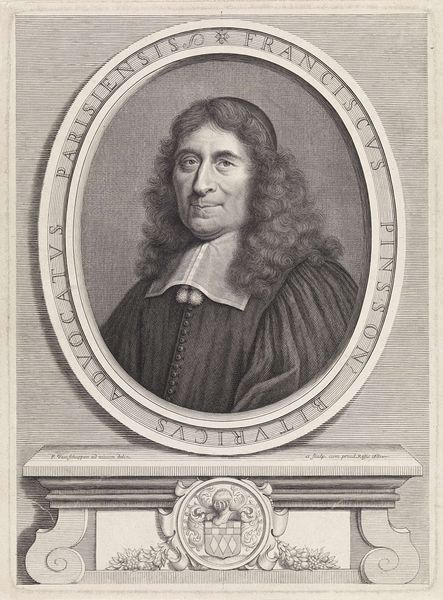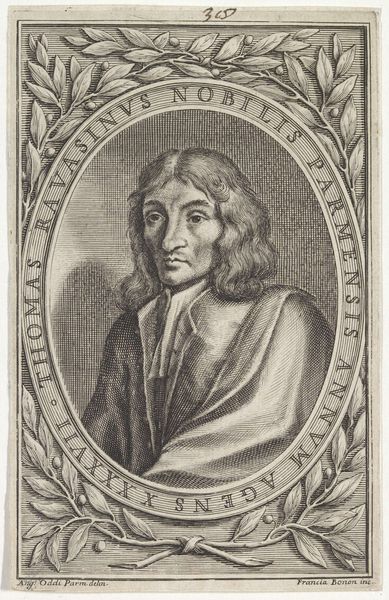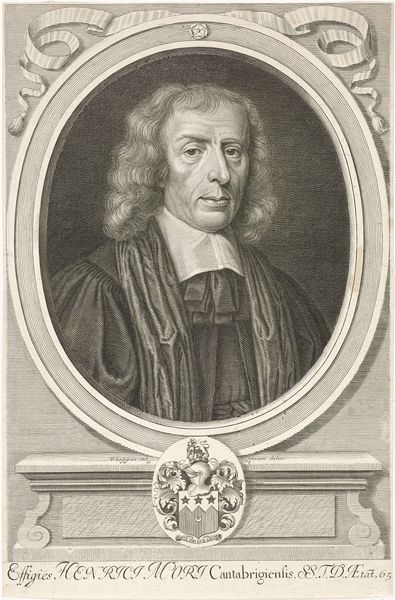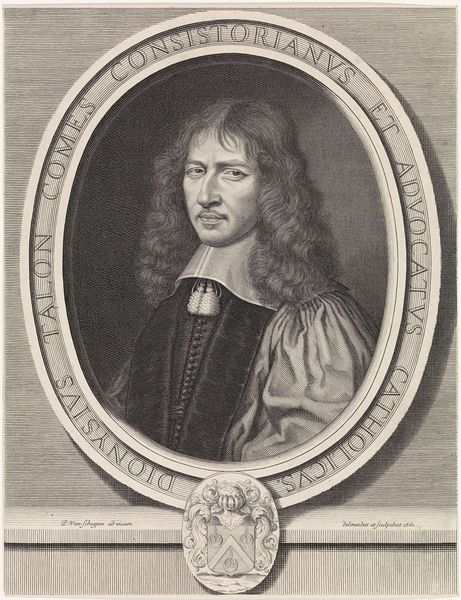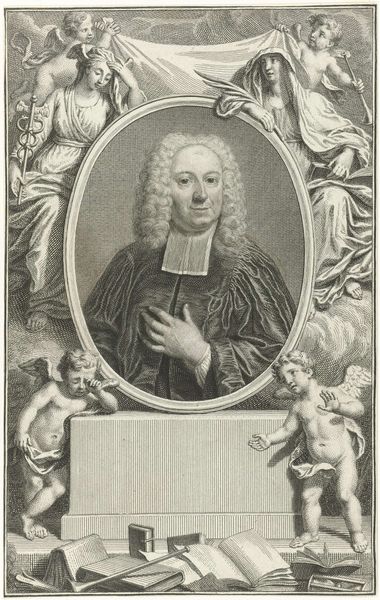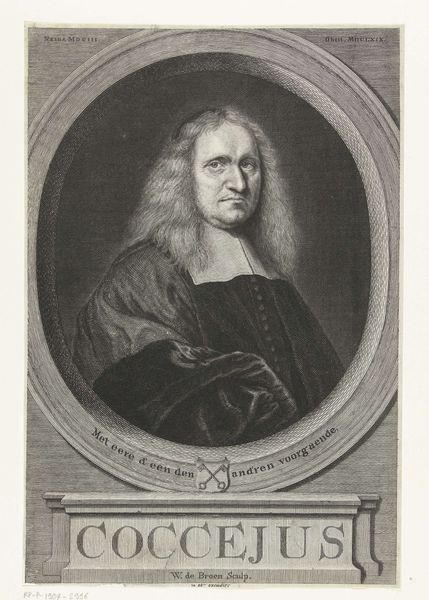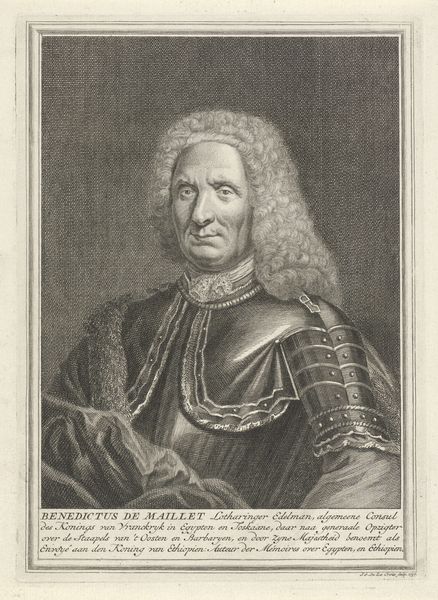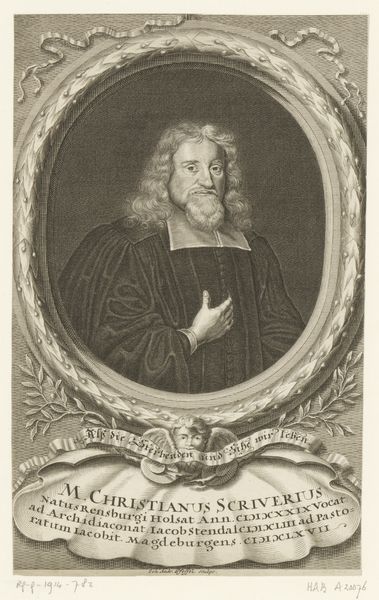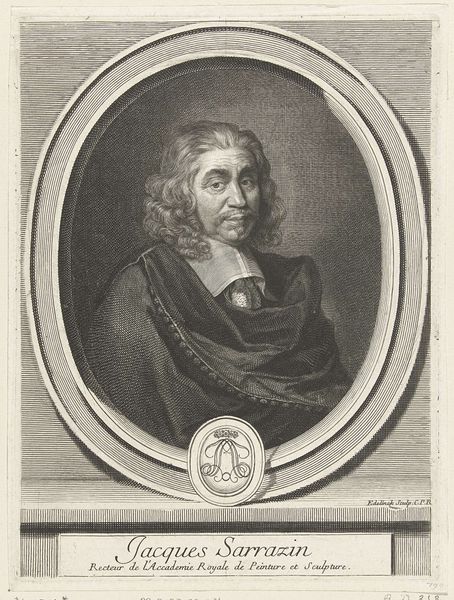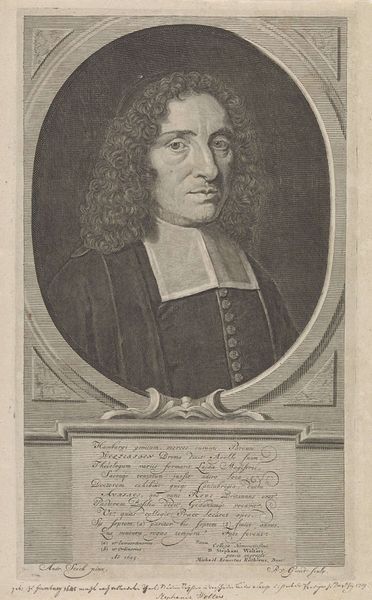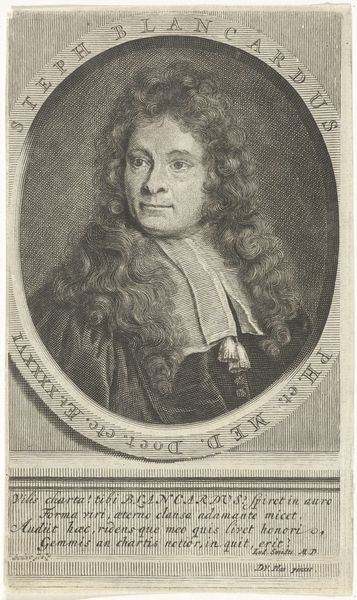
print, engraving
#
portrait
#
baroque
# print
#
old engraving style
#
engraving
Dimensions: height 282 mm, width 187 mm
Copyright: Rijks Museum: Open Domain
Curator: This is a print titled "Portret van Johannes Hevelius," created sometime between 1643 and 1691 by Lambert Visscher. It’s a Baroque-style portrait executed as an engraving. Editor: It's striking, the textures the engraver manages to achieve! The curtain behind the subject seems to have an ethereal silkiness, while the subject’s robes and hair are richly detailed. What can you tell us about the materials and process? Curator: Well, engraving, of course, is an intaglio process. Visscher would have used a burin to cut lines into a metal plate, likely copper. Ink is then forced into these grooves, and the surface wiped clean. The pressure of the printing press transfers the ink from the plate to the paper, creating the image. Notice how the density of lines creates areas of light and shadow to model the form. Editor: It makes you consider the hand of the artist so directly. Every single line is a deliberate mark, a conscious act of labor to translate likeness and even, dare I say, something of Hevelius' character, into ink on paper. And given that this is a portrait, I wonder how much this affects the availability of images in that time? What social role does a portrait play and for what audience would they have been made? Curator: The portrait is certainly idealized. The oval format and elaborate border lend an air of classical elegance and importance. Hevelius’ gaze is direct, yet refined. Note, too, the compositional choices—the dark background pushes him forward. Semiotically, the drapery connotes wealth and status, and the light falling on his face illuminates intelligence and insight. Editor: Yet it is these signs of wealth and power that come across almost theatrically. From the heavy curtain in the back to the almost cartoonish proportions of the leafy decorative wreath, everything seems so clearly geared towards creating a social standing through these deliberately crafted printed portraits. In what ways does such a deliberate crafting influence and impact the portrait as an accessible and reproducible product? Curator: Absolutely. And beyond its status as an image, consider the print itself as a precious commodity circulated among collectors and patrons, creating and reaffirming social networks. A fascinating convergence of artistry, craft, and socio-economic forces. Editor: Yes, reflecting on this now I really notice that. What begins as a single printed portrait, expands so dynamically outward in terms of the labour that makes it. Thanks for opening up new layers for me today!
Comments
No comments
Be the first to comment and join the conversation on the ultimate creative platform.
